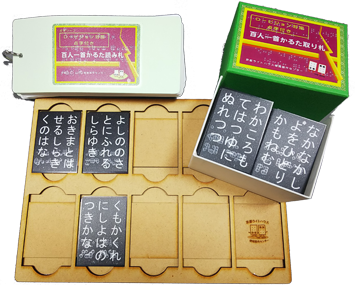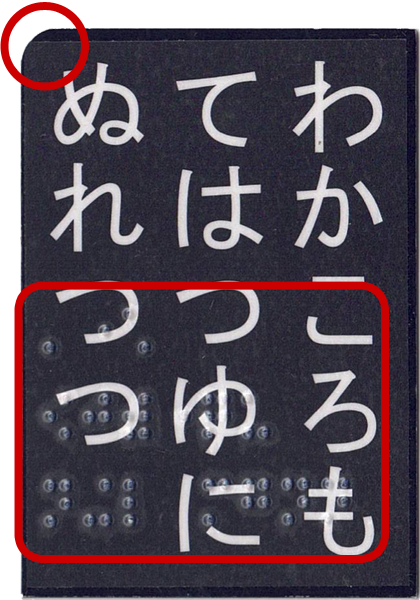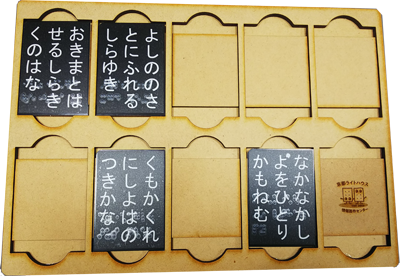In order for more people to experience the fun of Kyogi karuta, activities to promote "karuta with Braille" ("Barrier-free Karuta")are being carried out throughout Japan.
A new type of karuta with Braille has been produced, which is printed and shaped to make it easier for the visually impaired to recognize the cards.
Also, competition rules are being developed for the barrier-free competition.
■Features of Barrier-free Karuta Cards
1.Card background is black, text color is white

Cards for use with barrier-free karuta have a black background color and white text color. There is a reason why the barrier-free cards have this color scheme.
People with low vision have handicaps such as "difficulty seeing," "glare sensitivity," and "limited range of vision.
For these people, if the card has a white background, it will reflect a lot of light, making it difficult to see the card.Therefore, in barrier-free karuta, the background of the card is black and the text is white.
2.Use large, easy-to-read typefaces

The printed letters on the cards are large in size and of universal design that is easy to read so that people with low vision can easily identify them.
3.Phrases below the poem are also written in Braille
The cards so that people who have lost their sight can recognize the poems on the cards.
4.Round the top left corner of the card
The upper left corner of the card is rounded. This is so that people with visual impairments can see the direction of the card and read the Braille correctly.
5.Curving the card
In barrier-free karuta, the cards are curved or made thicker.This is to make it easier for the visually impaired to pick up the cards.This is to make it easier for the visually impaired to pick up the cards.
■Features of a card-arranging table

Set 10 cards in a fixed position
In normal "Kyogi karuta", each player arranges 25 cards in front of each player and plays the game. However, for people with visual impairment, it is difficult to play the game with the same rules. Therefore, in barrier-free karuta, we use a special table that allows us to set 10 cards in a specific position.
There is also a style of competition in which an area is set up between the competitors to place cards, and four cards are lined up in the four corners of the area, and they fight for them.









